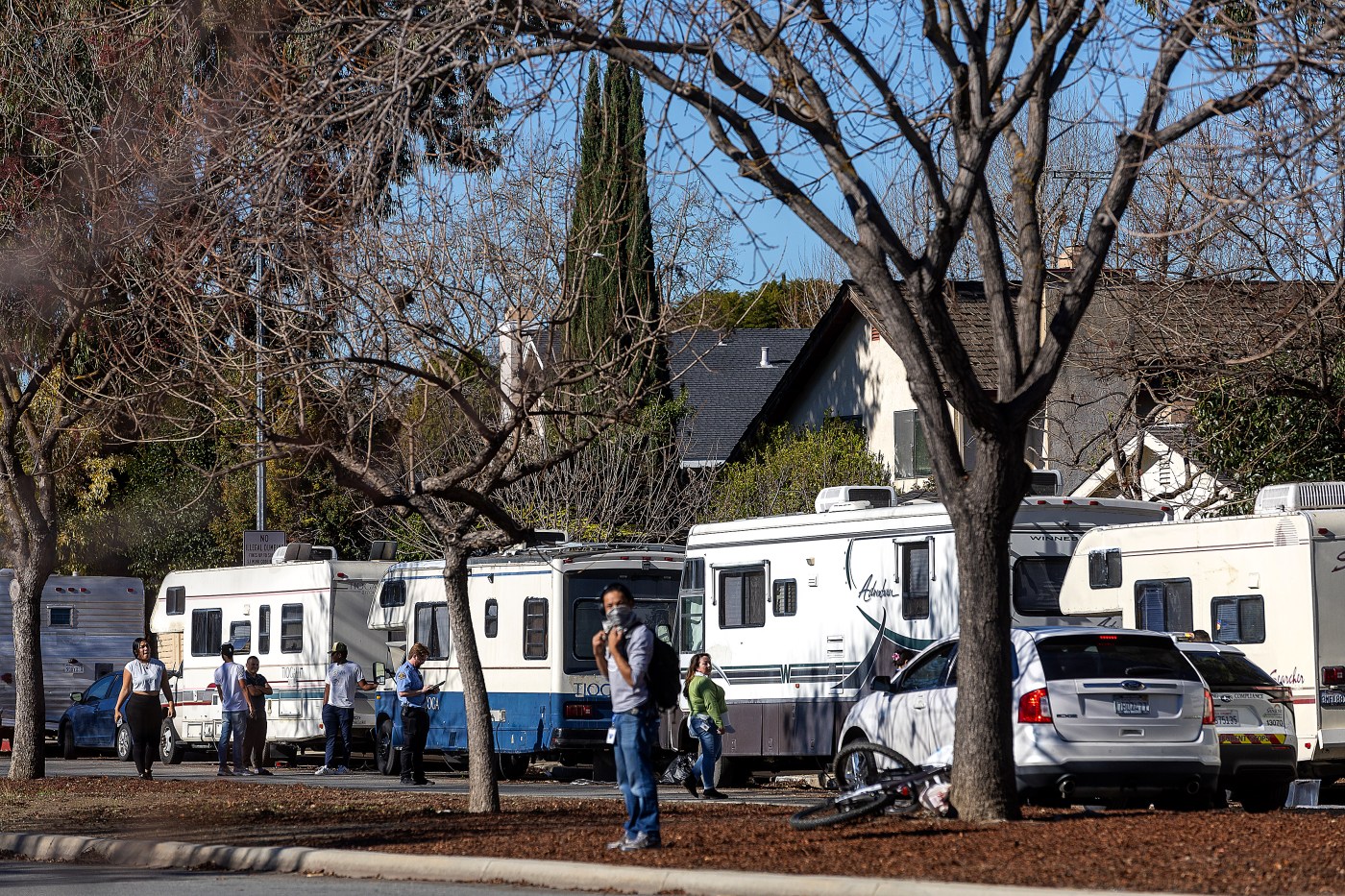
San Jose bulks up enforcement on RV encampments
In an effort to reduce persistent public safety hazards, San Jose is cracking down on oversized vehicle encampments, identifying 30 potential locations for towaway zones throughout the city, starting with one populated stretch near Chynoweth Park.
The program that rolled out Thursday will take a phased approach to create new towaway zones each week over the coming year as city officials seek to limit health hazards and other negative impacts to residents and businesses with nearly 2,000 oversized or lived-in vehicles on public streets.
“The neighbors and small business owners and people coming to the parks in these areas deserve some relief,” San Jose Mayor Matt Mahan said. “We have seen that when we have long-term encampments, whether they are RVs or tents, we see real challenges with noise, trash fires, in some cases, criminal activity, and we’ve heard repeatedly for years now from neighbors that they need some change.”
The 30 sites were identified after an inventory completed by city staff documented 1,974 oversized vehicles on public roads, nearly half of which were lived in. City officials have prioritized creating temporary zones where larger RV encampments are causing problems and in more sensitive areas, such as schools, waterways, and interim housing facilities.
The program, which initially cost $1.5 million and will receive $1.8 million in ongoing funding, could also create 10 permanent towaway zones.
Once the towaway signs are installed, Mahan said the city will provide a grace period for residents to move their vehicles to other locations or to potentially find other suitable shelter.
San Jose successfully tested a similar program last year at Shirakawa Elementary School, KIPP San Jose Collegiate, and the Challenger School – Berryessa — schools where students, teachers, and parents have reported a drop in crime and generally feeling safer around their campuses.
Mahan added that the city will phase out the program to coincide with the opening of the 6.3-acre Berryessa safe parking site next month, potentially taking up to 85 vehicles off the street. Over the next year, the city will also nearly triple its shelter capacity through tiny homes, safe sleeping, and safe parking sites.
“My hope is that we will see people find more sustainable places to be,” Mahan said. “It is not sustainable, not acceptable to have people permanently camp in tents or vehicles on public streets next to residential neighborhoods in front of businesses, schools, parks, etc.”
Yogi Sahu, a resident near Chynoweth Park, welcomed the new enforcement as his neighborhood has struggled with the public health and safety challenges from the RV encampments for the past two years.
“Initially, there were issues with sewage being dumped on the median,” Sahu said. “For a year, they used to literally put poop in the buckets and dump it on the median and I live right on the corner, I can smell everything. They keep their engines and generators running all night long, so it’s all noisy at night.”
However, for several homeless advocates and those living in RVs, the news they will have to move has led to more frustration and uncertainty over their living situations.
“Everyone has to go, but where are they going to go?” said Paul Peterson, a homeless resident living in an RV on Chynoweth Avenue. “I’ve got to drive around looking for a place to park with a 150-gallon tank, which is going to cost five bucks a gallon, and then move every 72 hours. They talk about RV parks, but tell me where there’s one close with amenities that isn’t full.”
As city officials installed signs Thursday, homeless advocate Gail Osmer warned that forcing RVs to move would only perpetuate the cycle of shuffling homeless residents around without providing them a long-term solution.
“I’m not happy with the whole situation,” Osmer said. “It’s this loop over again. They don’t know where they’re going to go, and in two weeks, if they don’t go, they’re going to take their homes.”
Related Articles
Silicon Valley homeless nonprofit sues Microsoft over disrupted email access
Bay Area homeless population rose to a record 38,891 people in 2024
This housing program keeps California college students off the streets and in the classroom
How to find emergency California student housing: A resource guide
California’s huge health care expansion has an unintended consequence: Closure of addiction, mental health treatment options
While he acknowledged that the RV enforcement program was not a silver bullet, Mahan said it was important for accountability as the city continues to build up its shelter capacity and called on the county and state to do more to ease the crisis.
“I don’t think this program alone is going to eliminate the RV encampments we’ve seen spread across the city, but I think it creates an incentive to find a more sustainable and permanent living situation,” Mahan said. “I think it gives some relief to residents and small businesses who have confronted adverse conditions for months in some cases years now and allows us to get in and clean up areas that have gotten really quite unsafe and unsanitary.”


